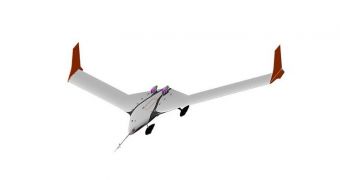Officials with the American space agency say that they plan to use a small, unmanned drone to conduct a series of tests on how aircraft behave when they pass the sound barrier. This effort could lead to the reintroduction of commercial supersonic aircraft.
The data acquired from these investigations will eventually be used to create supersonic or hypersonic aircraft capable of passing the sound barrier without causing the well-known sonic boom. This massive noise is one of the reasons that supersonic air travel has never really developed properly.
When completed, the X-56A will feature onboard computers equipped with software capable of analyzing the uncontrollable vibrations that air flowing over the wings causes on the body of supersonic airplanes. The test drone that will test these programs will not travel faster than sound itself.
The goal is not to create a supersonic drone, but rather to develop automatic software responses for the moment when the sonic boom is produced. If this sound can be eliminated, then successors to the ill-fated Concorde may once again take to the skies, the planned NASA X-56A aircraft included.
NASA plans call for the flight tests to occur later this summer. The Multi-Use Technology Testbed drone may be the agency's first choice. The aircraft was developed by Lockheed Martin for the United States Air Force (USAF), Space reports.
This drone has a wingspan of 8.5 meters (28 feet) and is about 2 meters (7.5 feet) long. Due to the huge size of its wings, it is subjected to many flutter vibrations, and so engineers outfitted it with an entire suite of software to handle this issue.
“Flexible wings and fuselages can result in significant reductions in the structural weight of aircraft,” explains the NASA Subsonic Fixed Wing Project deputy project manager Gary Martin. He is based at the agency's Dryden Flight Research Center, in Edwards, California.
“To maintain the long-term health of the structure and ride quality in a more flexible airplane, we need to actively alleviate gust loads on the airplane and suppress flutter, so gust load alleviation and active flutter suppression are two of the key technologies that NASA is working to advance,” the expert adds.
If the Lockheed drone manages to produce the relevant data NASA engineers are looking for, then the experts will begin constructing the X-56A later this year.

 14 DAY TRIAL //
14 DAY TRIAL //